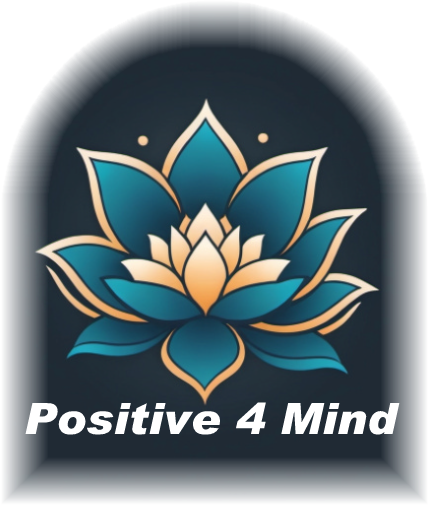Chapter 1: Connecting with Yourself - The Foundation
"How can I feel connected to others when I don't even know who I am?"
This question, posed by a participant in a spiritual retreat, captures a profound truth: the quality of our connection with others and with the divine depends largely on the quality of our connection with ourselves. Self-connection forms the essential foundation for all other relationships.
Yet in our externally-focused culture, self-connection is often neglected or misunderstood. We mistake self-absorption for self-awareness, self-criticism for self-improvement, and self-indulgence for self-care. True connection with yourself involves something deeper: a compassionate awareness of your authentic experience and an honoring of your innate value as a human being.
The Three Dimensions of Self-Connection
Connection with yourself encompasses three essential dimensions:
Dimensions of Self-Connection
- Self-Awareness: The ability to recognize and acknowledge your thoughts, emotions, sensations, needs, and patterns without judgment
- Self-Compassion: The practice of treating yourself with the same kindness, care, and understanding that you would offer to a good friend
- Self-Trust: The capacity to honor your inner wisdom, make choices aligned with your values, and maintain healthy boundaries
When these three dimensions are cultivated together, they create a foundation of inner security and wholeness. From this foundation, you can engage with others not from a place of need or fear, but from a place of genuine presence and generosity.
Why We Lose Connection with Ourselves
Self-connection is our natural state, but many factors can disrupt it:
- Childhood conditioning: Many of us learned early to ignore our own feelings and needs to maintain connection with caregivers
- Cultural messages: Society often values external achievement and appearance over inner awareness and authenticity
- Digital distraction: Constant stimulation keeps attention externally focused, creating inner fragmentation
- Trauma and stress: Overwhelming experiences can lead to disconnection from certain emotions or bodily sensations as a protective mechanism
- Pace of modern life: Busyness leaves little time for self-reflection and inner listening
These influences create what psychologist Carl Jung called "the divided self"—a state where parts of our experience are pushed into shadow while we present only what seems acceptable to the outer world.
The Gifts of Self-Connection
Cultivating a deeper relationship with yourself offers profound benefits:
- Emotional resilience: When you can acknowledge and hold your emotions with compassion, they become information rather than overwhelming forces
- Authentic choice: Self-connection allows you to make decisions aligned with your true values rather than external pressures
- Clearer boundaries: Knowing your needs and limits enables you to establish healthy boundaries in relationships
- Greater presence: Freedom from inner conflict creates more capacity to be fully present with others
- Spiritual receptivity: Inner stillness and self-acceptance create an opening for deeper spiritual connection
Support Your Self-Connection
The Positive Affirmations app from positive4mind.com offers self-connection affirmations that can help counter negative self-talk and strengthen your relationship with yourself.
Try the Positive Affirmations appSelf-Connection vs. Self-Absorption
Some spiritual traditions caution against excessive focus on the self, seeing it as contrary to spiritual growth. This reflects an important distinction between self-connection and self-absorption:
Self-Connection vs. Self-Absorption
| Self-Connection | Self-Absorption |
|---|---|
| Present-moment awareness of experience | Rumination about the past or future |
| Compassionate acknowledgment of all emotions | Indulgence in emotional drama |
| Recognition of common humanity | Exclusive focus on personal concerns |
| Gateway to deeper connection with others | Barrier to authentic relationship |
True self-connection actually diminishes self-preoccupation by bringing awareness to the present moment and connecting you with your deeper humanity. In this way, it serves as a foundation for genuine connection with others and with the transcendent dimension of life.
"Your task is not to seek for love, but merely to seek and find all the barriers within yourself that you have built against it."
— Rumi
Cultivating Self-Connection: The Practice of Presence
The most fundamental practice for developing self-connection is cultivating presence with your own experience. This begins with simple mindfulness:
Basic Self-Connection Practice: The SEAT Method
Try this practice for 5 minutes daily to strengthen self-connection:
- Settle your body in a comfortable position
- Engage with your breathing, feeling the sensations of each inhale and exhale
- Attend to your inner experience—sensations, emotions, thoughts—with gentle curiosity
- Tend to yourself with kindness, acknowledging whatever arises without judgment
As thoughts or judgments arise, simply notice them and return to the present-moment experience of being with yourself.
This practice creates a foundation of mindful self-awareness. In the next chapter, we'll explore more specific practices to deepen each dimension of self-connection: self-awareness, self-compassion, and self-trust.
Remember that self-connection is not a destination but an ongoing relationship. Like any important relationship, it requires attention, patience, and regular nurturing. The quality of this relationship determines much about how you experience your life and how you connect with others and with the divine.
Reflection Questions
- What messages did you receive growing up about connecting with yourself and your emotions?
- When do you feel most connected to yourself? What activities or environments support this connection?
- What aspects of yourself do you find most difficult to acknowledge or accept?
- How might developing a stronger connection with yourself influence your relationships with others?
In the next chapter, we'll explore specific practices to deepen self-awareness, recognizing that knowing yourself is the essential first step in the journey of sacred connection.
